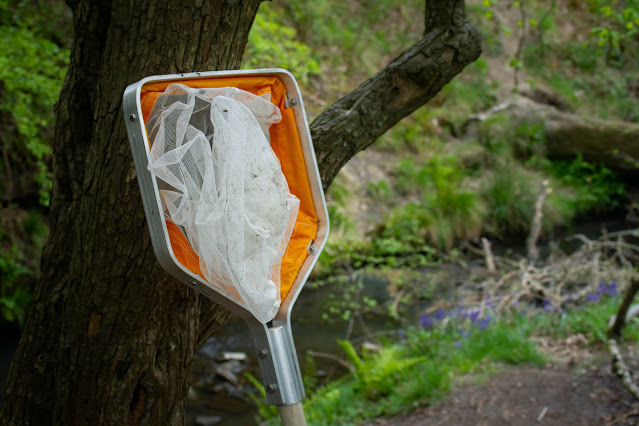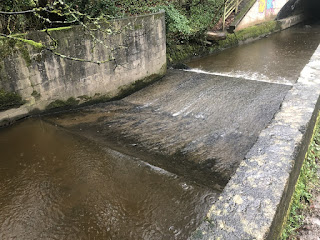An Update on Smithy Brook
Anyone who read my previous blog regarding a pollution event affecting Smithy Brook back in January will know that the stream has not been in a healthy state as of late. Four following the event, we continue to monitor the site every week, tracking and recording the progress being made. Sadly, Smithy Brook remains polluted and still lacks its once-abundant array of biodiversity. To monitor its regeneration, we have been performing weekly kick samples (If you are unfamiliar with kick sampling, please refer to my last blog about Smithy Brook: https://lovemyriver.blogspot.com/2022/02/27012022-kick-sampling-at-smithy-brook.html).
 |
| Interesting biotrophic fungus that we came across (Puccinia porri). |
The pollution event was reported to the Environmental Agency, and it remains to be an ongoing investigation. Potentially the incident could result in prosecution, and due to its serious allegation, the investigation is confidential. Hopefully, there will be some closure soon. We are awaiting updates and hope for news at the next steering group meeting.
Leaky dams are a great way to reduce the effects of flash flooding and can slowly mediate flow without completely blocking the waterway. Meanwhile, migratory fish can pass through leaky dams. There are plans to implement seven leaky damns at Smithy Brook.
We have been taking two samples at each future dam site, one upstream and one downstream from where the dams will be erected. The initial aim was to collect data that could demonstrate the effects of leaky dams on wildlife populations. We'd compare pre-dam kick samples to kick samples taken after the dams had been constructed.
 |
| Caddisfly spotted near the bank (Trichoptera) |
To our surprise, we retrieved a damselfly larva (Pyrrhosoma nymphula) in a recent sample. Sadly I didn't have my DSLR camera on me, but we managed to get a photo on our phones. Damselfly larvae are generally sensitive to pollution, yet this one seemed to be reasonably spritely. Project officer Samuel Gibson suggests that these larvae spend a large portion of their adolescence deep under sediment, which could have protected it from the contaminated water.
 |
| Fish fry, maybe a three-spined stickleback (Gasterosteus aculeatus). |
We are now ending the weekly monitoring of Smithy Brook following the recent pollution event. However, have plans to continue sampling bi-weekly to track the re-emergence of biodiversity. Finally we are seeing promising signs of life once again.



Comments
Post a Comment